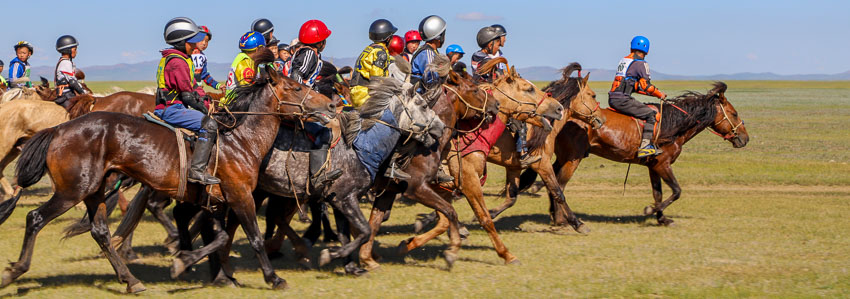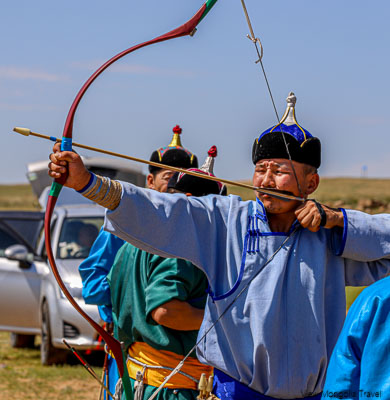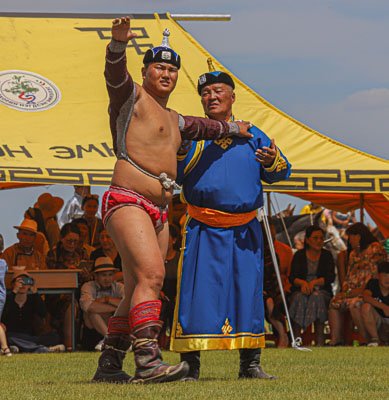About Mongolian Horse Racing
Mongolian horse race is rather dissimilar to the horse racing of other countries. There are several significant horse races throughout the year in Mongolia, including the Naadam Festival race, Tasagaan Sar Lunar New Year race, the spring horse race and the Ikh Hurd race.
In terms of importance, the Ikh Hurd race is the biggest. The best of the best horses from every corner of Mongolia compete in this race for high standing. The best horses, best horse trainers and best riders of Ikh Hurd’s first 5 places earn scores doubling the scores awarded during the State Naadam Festival. In terms of popularity, Naadam is the most popular national holiday and traditional sporting event. All cities, towns and villages organize their Naadams and organize the horse races in their open horse racing field outside of the cities and towns. The racing distance differs depending on the ages of the horse. There are six racing categories in the Naadam festival according to the age of the horses.
Mongolian race horses are ridden by 7 to 13 year old girls and boys. The racing routes are straight requiring less navigation and more speed and endurance during the race. However, the long distance, weather and road conditions and other challenges require careful consideration for the jockeys’ safety. The race horses were ridden without saddles and child riders do not wear heavy clothing to be as light as possible. However, there is a new regulation; the jokey must be protected by accident insurance, protective gear such as helmets, vests, knee and elbow pads, and protective stirrups. Traditionally, children rode without saddles. But a new rule requires racing saddles for increased safety.
Horses competing in the races are trained for at least a month prior to the start of a festival. The horse races are held outside of Ulaanbaatar in the open fields. While waiting for horse race, the racing fields are bustling with interesting activity for travelers to enjoy, such as folk and horse shows, unique holiday meals, craft sales and others.
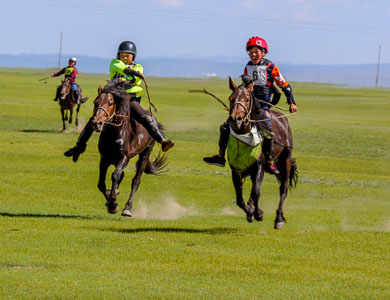
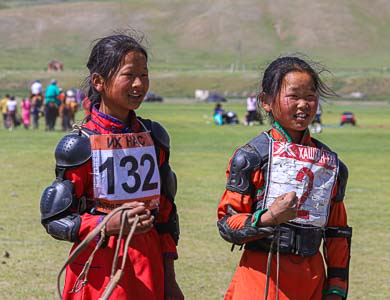

What is the best race?
Depending on if you attend a smaller, local Naadam Festival or Ulaanbaatar’s Naadam Festival, the horse racing takes place for two days or four days. The horses race for two days in local Naadams and 4 days in Ulaanbaata’s Naadam on July 10, 11 and 12. The horse trainer’s Naadam is on 13 July at Khui Doloon Khudag, a horse racing field 28km west of Ulaanbaatar. According to the Naadam rule, cross-bred horses are not allowed to compete with the Mongol horses. Therefore, the cross-bred horses race in Hui Doloon Khudag on 13 July.
It is not advisable to see all the races because there are other sports and events taking place on the same days. While planning your visit, please refer to the State or Ulaanbaatar Naadam program, which we update annually.
At the Ulaanbaatar Naadam, three and four-year-old horses race on 11 July. Stallions and full-grown horses race on 11 July. 5 and 2-year-old horses race on 12 July.
The July 10 horse race has fewer spectators compared to the next days’ races.
The stallion race is worth seeing. However, it coincides with the Naadam Festival opening ceremony in downtown Ulaanbaatar.
The 5-year old horse “soyolon” is the fastest, a heavenly creature for Mongolians. As such, the 5-year old horse race has the most spectators. Many people prefer to stand down wind of the race in order to be dusted from the soyolon race; being dusted and also being hit by the sweat of soyolon horses is considered to be lucky! Visitors are advised to take extra care and to be well aware of their surroundings in this field, as it is customary for boastful riders to gallop here and there at full speed among the spectators.
The 2-year old horses have many viewers too. Some of the 2-year-old horses are still lively at the finish line while others are tired, and arrive at waking speed, causing their riders to cry. This is a moment some people love and it is traditional to wish their best both to the jockeys and 2-year horses for their next races.
Only the first 5 winning horses of each race category are awarded prizes. However, the last horse and jockey of the 2-year-old horse race is awarded as a show of sportsmanship and to encourage the rider.
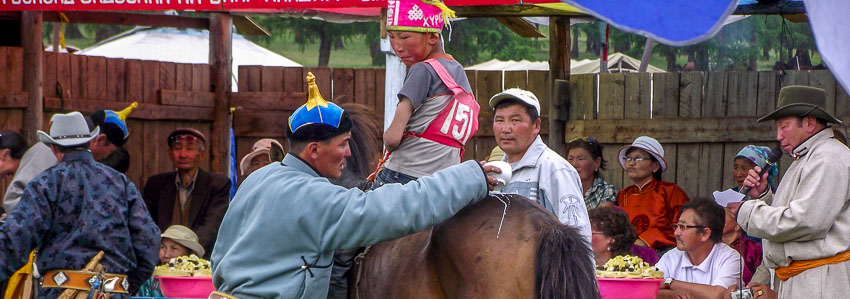
What is the award for the winning horses, trainers and jockeys?
The first five horses of all races are awarded medals regardless of the town Naadam, province Naadam, city Naadam or the State Naadam. The winning horses of the towns are not awarded titles while the town trainers are, depending upon how many horses of the trainer won in the first five places. The horse trainer’s title rule is the same for the province, city and the state Naadams. The state and provincial titles are awarded to the horses which have had success several times in provincial, regional and state Naadams. There are some monetary prizes as well as horses etc. for the winners, in addition to the medal.
For the jockeys, the prizes are mostly school equipment and even a Sport’s Master Degree for the jockeys who have succeeded several times for the state and regional Naadams.
Photographers shoot some of their most impressive Naadam photos at the horse racing fields.
See the horse race sendoff ceremony and the younger horses’ teeth inspection or stay near the finishing line and experience winning moments. The sendoff ceremony and teeth inspection are among the most interesting, behind-the-scenes features of Mongolian horse racing; we highly recommend it, especially for photographers.
However, once again we advise caution; take great care to not be in horse rider’s way and be aware around horses, as they can kick.
Another excellent photo opportunity is to follow the race with your jeep. Based on our experience, our photographer clients had some of the most stunning action photos while following the racing horses. However, this option is not available during bigger Naadams. Even though available during smaller Naadams of towns. Local permission and an additional fee are required.
